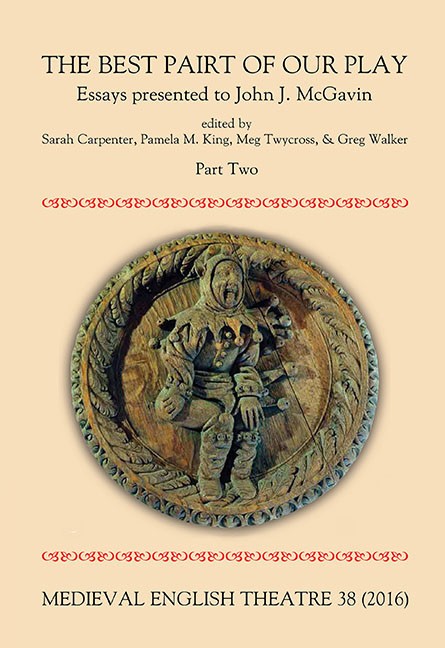 Medieval English Theatre 38
Medieval English Theatre 38 Published online by Cambridge University Press: 20 April 2017
On 11 June 1634 a splendid heraldic funeral procession took place in the Scottish Borders, culminating in the laying to rest of Walter Scott, first Earl of Buccleuch, in St Mary's Kirk in Hawick. The Earl had died in London from apoplexy almost seven months earlier on 20 November 1633, having recently returned to Britain from military service in Flanders. John McGavin has described heraldic funerals, such as that of the Earl, as being ‘a form of public, socially performative theatre, providing an elaborate spectacle for the onlookers, and self-promotion for the “actors” and their institution (the noble family)’. This paper seeks to explore the evidence for the Earl of Buccleuch's funeral to provide some insight into what the onlookers would have seen and what message the participants in the procession, or ‘actors’, intended to communicate through their performance, while at the same time examining the practical arrangements that had to be made and expenses that were incurred in order to create this grand ceremonial occasion.
Buccleuch's funeral procession was only one of a number of ceremonial funerals in early modern Scotland. The study of such ceremonial has received increasing attention from historians and literary scholars in recent years. Highly regulated affairs, these occasions are noted as having been ‘splendid spectacles’ which drew heavily on the financial resources of the families concerned. They could involve large numbers of participants. For example, at Lord Hugh Fraser's funeral in 1576, the corpse was accompanied to its burial by 2,000 men. Furthermore, the body could be transported long distances, a practice not restricted to Scotland. For example, in the case of early modern France, Vanessa Harding notes the transportation of Maître Jean de l'Aultry, conseiller ordinaire du Roy and vicomte of Levignan and Bèze, from Paris to Bèze near Dijon in 1645. Following the union of the crowns in 1603 the bodies of certain Scots noblemen who had died in England, such as the first Earl of Hume in 1619, the second Marquis of Hamilton in 1624, and the Earl of Stirling in 1640, were transported back to Scotland for burial.
To save this book to your Kindle, first ensure [email protected] is added to your Approved Personal Document E-mail List under your Personal Document Settings on the Manage Your Content and Devices page of your Amazon account. Then enter the ‘name’ part of your Kindle email address below. Find out more about saving to your Kindle.
Note you can select to save to either the @free.kindle.com or @kindle.com variations. ‘@free.kindle.com’ emails are free but can only be saved to your device when it is connected to wi-fi. ‘@kindle.com’ emails can be delivered even when you are not connected to wi-fi, but note that service fees apply.
Find out more about the Kindle Personal Document Service.
To save content items to your account, please confirm that you agree to abide by our usage policies. If this is the first time you use this feature, you will be asked to authorise Cambridge Core to connect with your account. Find out more about saving content to Dropbox.
To save content items to your account, please confirm that you agree to abide by our usage policies. If this is the first time you use this feature, you will be asked to authorise Cambridge Core to connect with your account. Find out more about saving content to Google Drive.